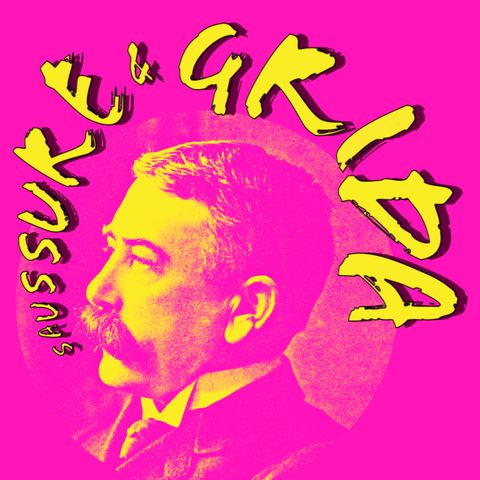9. L'imperialismo linguistico e l'arabo di Palestina

Descarga y escucha en cualquier lugar
Descarga tus episodios favoritos y disfrútalos, ¡dondequiera que estés! Regístrate o inicia sesión ahora para acceder a la escucha sin conexión.
Descripción
Per imporre una lingua, e conseguentemente una cultura, una politica, etc. non serve necessariamente bandire le lingue preesistenti, si può giocare su quello che definiamo qui 'imperialismo linguistico', con piccoli...
mostra másIn questa puntata vediamo la situazione dell'arabo di Palestina, come è stata in passato, come è adesso, e come si pensa sarà in futuro (spoiler: brutta).
La sigla è stata prodotta da White Hot e fornita da https://freebeats.io
Grafiche: Gianluca La Bruna
L’audio in arabo palestinese è tratto dal canale YouTube ILoveLanguages! https://www.youtube.com/watch?v=06_STuBV4Dg&t=44s
FONTI:
- AA.VV. Journal of Holy Land and Palestine Studies, 22(1):129-138.
- Al-Husari, S. (1961). Arabism first. Beirut: Dar Al-‘ilm Lil-malayin.
- Al-Jallad, A. (2018). The Earliest Stages of Arabic and its Linguistic Classification. In E. Benmamoun, & R. Bassiouney (Eds.), The Routledge Handbook of Arabic Linguistics:315-331. Routledge.
- Alon, S. (2019). No One to See Here: Genres of Neutralization and the Ongoing Nakba. Arab Studies Journal. Georgetown University. 27(1):91–117.
- Al‐Wer, E.; Jong, R. (2017). Dialects of Arabic. In C. Boberg; J. Nerbonne; D. Watt (Eds.). The Handbook of Dialectology:523–534. Wiley.
- Amara, M.H. (2003). Recent foreign language education policies in Palestine. Language Problems and Language Planning, 27(3):217-232.
- Amara, M. (2017). Arabic in Israel: Language, Identity and Conflict (1st ed.). Routledge.
- Amara, M. & Mar’i, A. (2006) Language Education Policy: The Arab minority in Israel. Netherlands: Springer.
- Azaryahu, M. (2000). Hebrew and Hebraicization in the Formation of Cultural Identity. Jewish Studies 40:77-88.
- Azaryahu, M. & Golan, A. (2001). (Re)naming the landscape: The formation of the Hebrew map of Israel 1949–1960. Journal of Historical Geography. 27(2):178–195.
- Baumel, Y. (2007). A blue and white shadow: The Israeli establishment’s policy and actions among its Arab citizens – the formative years 1958–1968. Haifa: Pardes.
- Bekerman, Z. & Maoz, I. (2005). Trouble with identity: Obstacles to coexistence education in conflict ridden societies. Identity: An International Journal of Theory and Research, 5(4):341–357.
- Brustad, K. & Zuniga, E. (2019). Chapter 16: Levantine Arabic. In J. Huehnergard & N. Pat-El (Eds.). The Semitic Languages 2nd ed.:403–432. Routledge.
- Giles, H., Bourhis, R.Y. & Taylor, D.M. (1977). Towards a theory of language in ethnic group relations. In H. Giles (Ed.), Language, ethnicity and ingroup relations:307–348. London: Academic Press
- Grossman, D. (1992). Present and absentees. Hakibutz Hame’ohad.
- Har-Shav, B. (1993). Language in time of revolution. Berkeley: University of California Press. Jabareen, Y.T. (2015). The Arab-Palestinian community in Israel: A test case for collective rights under international law. The George Washington International Law Review, 47:449–480.
- Sa’di, A.H. (2002). Catastrophe, Memory and Identity: Al-Nakbah as a Component of Palestinian Identity. Israel Studies. 7(2):175–198.
- Shammas, A. (1995). The next morning: The Palestinians and the rest of the longing heart. In E. Rekhess & T. Tagnes (Eds.), Arab politics in Israel on crossroads:19–31. Tel Aviv: Tel Aviv University, Moshe Dayyan Centre for Middle East and Africa.
- Shohamy, E. (1999). Language and identity of Jews in Israel and in the diaspora. In D. Zisenwine and D. Schers (Eds.), Present and future: Jewish culture, identity and language:79–100. Tel Aviv: Tel Aviv University, School of Education.
Información
| Autor | Irene |
| Organización | Irene Lami |
| Página web | - |
| Etiquetas |
Copyright 2024 - Spreaker Inc. an iHeartMedia Company

Comentarios